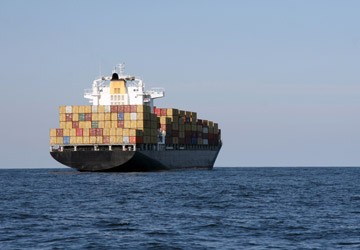The volumes of cargo transferred reached 10,300 million tons

Daniel Bosch Wood
Maritim Lawyer
LLM Southampton
Las Palmas de Gran Canaria
International maritime trade increased by 2.6% in 2016 compared to the previous year, close to the historical average, which had been 3% annually in the last four decades. In this context, developing countries continued to account for most of the maritime cargo in 2016, accounting for 59% of the world’s transported goods and almost two-thirds of the landed products.
The “2017 Review of Maritime Transport”, published by UNCTAD (United Nations Conference on Trade and Development), analyzes world maritime trade last year. The review of the Rosario Stock Exchange, highlights that the total volumes were approximately 10,300 million tons, which reflects the addition of more than 260 million tons of cargo in relation to the previous year, approximately half of which were attributed to the tanker trade. Strong demand for imports in China in 2016 continued to support global maritime trade, although overall growth was offset by limited expansion in import demand from other developing regions.
Dry cargo shipments amounted to 7,230 million tons in 2016, which would reflect an increase of 2% over the previous year, while the share of the main bulk products (coal, iron ore, cereals and bauxite / alumina) / phosphate rock) reached 43.9% of the total volume of dry cargo, followed by trade in containers (23.8%) and minor bulk (23.7%). In the case of grains, the global transported cargo reached 476 million tons in 2016.
In 2016, distance-adjusted global maritime trade continued to grow, but at a slightly faster pace than that measured in tons. The worldwide shipment of tons-miles would have reached 55,057 million, up 3.2% from the previous year.
Despite particularly weak import demand and limited exports in many economies, the developing economies as a group continued to account for the majority of global maritime cargo shipments in 2016, accounting for 59% of global goods loaded (output / exports) and almost two thirds of the products landed (incoming / imported), respectively
The maritime transport of solid bulk in 2016
A weak investment had the burden of solid bulks, which remains very dependent on the development of the Chinese economy. In 2016, global demand for dry bulk products grew at a rate of just 1.3%, taking total shipments to 4,900 million tons. China continues to be the main source of growth, due to the positive impact of the stimulus measures introduced during the year, driven by policies that helped to increase infrastructure and investment in the housing market and, in turn, the demand for basic commodities. and steel.
However, these trends were offset by declines in import volumes in Latin America and the Caribbean, North America and India.
In solid bulks, the volume of trade in the main commodities increased by 1.6%. The iron ore trade showed the strongest growth with volumes expanding by 3.4%, reaching 1,400 billion tons in 2016.
Imports to China increased more than 7%, reflecting the growth of the country’s steel production. In addition, domestic production of iron ore fell and there was increasing activity and access to affordable and high quality iron ore from Australia and Brazil. On the contrary, imports of iron ore in Europe and other Asian countries were reduced, in the context of low steel prices.
The coal trade decreased in 2016. The total volumes were estimated at 1,140 million tons. The fall in thermal coal imports in India, Japan, the Republic of Korea and Europe was offset by a 4% increase in imports from other Asian countries, especially China, where import volumes increased by more than 28%.
Grain trade grew by an estimated 3.7% in 2016, reaching 476 million tons, as imports into the European Union increased sharply, due to poor harvests in some producing countries. In China, grain imports fell because the government decided to promote the use of local grain reserves to support local farmers. Import demand in the United States decreased due to strong domestic production, while Brazil increased its exports of corn and soybeans and Argentina increased its corn and wheat exports.
